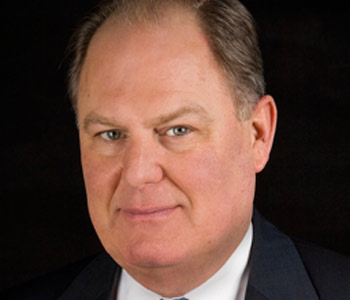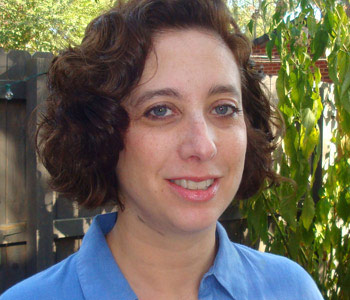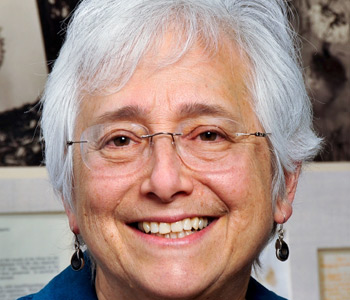Jack Censer
On the Trail of the D.C. Sniper: Fear and the Media
University of Virginia Press
264 pages, 9 x 6 1/2 inches
ISBN 978 0813928944
On the Trail of the D.C. Sniper tells the story of the press coverage of the deeds of John Muhammad and Lee Malvo as they traversed the Washington D.C. area in October 2002.
Honing in on twenty-three days permits a tightly focused analysis of the kaleidoscope of information and opinions provided by the media.
To understand this coverage, the book also compares it to the sniper as imagined by major school systems responding to the threat.
In a nutshell, the press embraced fear while the schools turned toward coping. This contrast does not prove who was right but instead reveals the underlying structures of press and schools which then led and still leads toward a particular viewpoint. The impact of a media inclined to propagate fearful reporting can be problematic in a nation in which fear is so casually used to political and commercial advantage.
The narrative story of the reporting perhaps provides even more unexpected results than the book’s main conclusion. Following journalists who surveyed this carnage reveals more vulnerable professionals than appear in either movies or the writings of critics. The image of the schools wrestling with that crisis, on the other hand, shows decisions that are rarely in the spotlight.
Despite the general orientation of the press, differences—some surprising—turn up in this book. Some of them relate to the variety of the media I include—regional, national, and international; radio; local and cable television; and opinion and news shows.

The impact of a media inclined to propagate fearful reporting can be problematic in a nation in which fear is so casually used to political and commercial advantage.
I was drawn to a new topic—I am an historian of the press of eighteenth-century and revolutionary France.
But I can trace my interest in contemporary media to my belief that the techniques developed by scholars in eighteenth-century press history can be more generally relevant. (A very large group of historians, scattered across the globe, have worked intensively on these methods—even collectively, I might say, under the informal leadership of Pierre Rétat and Jean Sgard, who taught in Lyons and Grenoble respectively.)
Of course, living in the Washington suburbs also exposed me to the press coverage of 2002 and fascinated me.
Two contemporary issues pushed me to take up this particular subject.
First, despite some important exceptions, the dominant approach to the contemporary American press measures political bias. While this is surely an important perspective, it seemed not to match up well to the practice of more general reporting.
I decided to pursue the motivations driving the press in a story where it was difficult to establish political sides. Despite some effort to construct the sniper as a terrorist or, from the left, as the result of poor gun control laws, this story essentially lacked a partisan rift. And in this situation professional goals and personal risks proved to be the main factors.
Second, I was unhappy with the standards used by media critics. Such scholars in and outside the university, whether from left or right, typically start with personal abstract standards and produce overwrought condemnations.
Even the most generous approach—using the goal of objectivity—is not very helpful: objective knowledge is not really attainable for complicated issues. As a substitute, the press tries to meet the goal of objectivity by simply showing “both” sides—even if one or even both of these sides have only a vague claim to fairness.
Although I do not have a solution to this problem, I show a range of approaches to the sniper story from various strains of the media, contrast those approaches to the ones of the schools, and link media coverage to factors that framed reporting. Even though the “true evaluation” might not emerge, we might understand the basis for the reporting we see
Finally, the view that contemporary media is too inclined to purvey fear, raises another important question. While my book asserts that the years after 9/11 proved more fearful for most Americans, the question may still be asked how this era fits in with previous ones.
Some scholars see a systematic rise in fear during the last few decades or even earlier. I believe that there have been at least episodic spikes. All of these trends make an impact both on the press and on the public. But always together? At the same time? To what degree? The book helps to establish a chronology.
To gain a sense of the immediacy of coverage, turn to page 53 to begin a sample of the panicky reporting when the sniper was on the loose.
These pages detail the first hour of television coverage of a shooting on October 7, 2002. After the initial six murders on October 2 and 3, an eerie calm had settled over the metropolitan area that was later somewhat disrupted on October 5 when a woman was wounded south of the city in Virginia. Already on October 4, Charles Moose, chief of police for Montgomery County and head of the task force, had assured the public that children were safe in school. In this context the October 7 shooting of eighth-grader Iran Brown at Tasker Middle School in Bowie, Maryland, would, of course, prove quite unsettling.
Nothing about the press coverage mitigated the anxiety that would have normally occurred over this shooting. In fact, following the attack at 8:09 A.M., the press scrambled exceptionally hard to get reporters into place. As news teams consolidated, the broadcasts, including anchors and reporters, developed a style in which coverage moved from source to source in a staccato rhythm that created anticipation and fed worry. The frenetic style of the production overwhelmed the customary calm of the anchors. In the most extreme case, one anchor added to the unease. Insightful and highly experienced Mike Buchanan fidgeted, adjusting his tie and holding his head, as in pain. He showed his exasperation with the investigation. In yet another case, the on-site reporter, with a crack in his voice, described the chaos as parents showed up to pick up their kids.
All this was exacerbated by an announcement on the local FOX station that six or seven police cars were heading off to another shooting. Seen from the camera on a helicopter, a speeding police convoy proceeded to a Wal-Mart only a couple of minutes away. FOX threw doubt on the story right away, but only ten minutes later could watchers on the NBC affiliate breathe a sigh of relief. Still those watching the ABC station could find a new cause for fear. Even as FOX changed its story, ABC reported not one but two shootings. Then ABC put up a map labeled “New Shootings.” Finally, twelve minutes after the initial retraction, ABC abandoned this tack. Of course, the reports returned to Tasker which was still awash with nervous parents extracting their children from the school. After continuing several more hours, finally the defeated channels had to give up on any progress in the case.

Objective knowledge is not really attainable for complicated issues. As a substitute, the press tries to meet the goal of objectivity by simply showing “both” sides—even if one or even both of these sides have only a vague claim to fairness.
I hope this work will contribute to three contextual areas: understanding the economic/career motivations of journalists, evaluating the media by standards derived from its period, and discovering a chronological history of fear.
Such evaluation of the media from several angles can lead to a number of other observations. For example, the book scrutinizes separately the television opinion shows which one might hypothesize would be most likely to spread fear. I found, however, that this was generally not the case. In fact, hosts like Chris Matthews on Hardball evinced virtually no interest in the sniper story.
The opinion press also followed the lead of the rest of the media in asserting that the snipers were not political terrorists. Sean Hannity, the one journalist who suspected terrorism, dropped that tack after several of his own guests demurred. It remains unclear why the opinion press rather unexpectedly remained relatively loath to raise the decibel level. Perhaps, that so many broadcasts originated from outside the Washington reduced anxiety on the subject.
In describing the printed press, I sampled the regional, national, and international printed press in an effort to understand not only the coverage by the press but also to contribute to the debate and discussion over nationalism and globalism.
While I expected that different areas of the country would appropriate the story to meet their own concerns, the sample I used (from New York, Houston, Chicago, and San Francisco) did little more than occasionally point out matters consistent with the concerns of the paper.
One theme somewhat developed was the way that this incident showed the need for greater gun control. But most reporting followed the line laid down by the local papers in the Washington region.
This same lack of independence was even more evident in the international press from France, England, South Africa, and India that I surveyed. Likely, the explanation here is the reverse of that of the opinion shows: most journalists who covered this story, regardless of their home paper, did so through correspondents based in Washington. These results might underline the unconscious way that the temper of a region affects reporting.




We don't put paywalls. We don't distract you with ads. We don't sell your data.
Please help to keep this running!